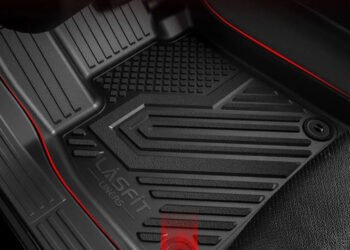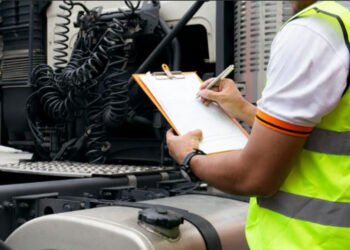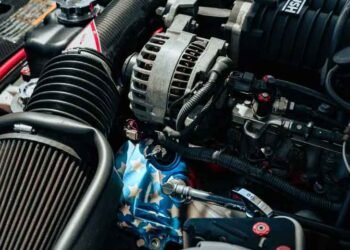Owning an all-terrain vehicle (ATV) is an exhilarating way to explore the great outdoors. Whether you’re hitting the trails for sport, using your ATV for work, or just enjoying the freedom it provides, your vehicle can be a long-term investment in adventure. However, before you take the plunge and purchase an ATV, it’s essential to plan for proper storage and maintenance. These key factors will ensure that your ATV remains in great condition, providing years of use.
This article will guide you through the necessary preparations, including choosing the right storage solution and developing a maintenance routine that will keep your ATV running smoothly.
Choosing the Right Storage Solution
One of the first things to consider when buying an ATV is where you’re going to store it. Proper storage not only protects your investment from weather-related damage but also extends the lifespan of your ATV by preventing rust and wear.
Importance of Proper ATV Storage
Leaving an ATV exposed to the elements can cause significant damage. Weather conditions like rain, snow, and even excessive sunlight can lead to rust, fading, and mechanical issues over time. That’s why having a dedicated storage space is essential to keeping your ATV in top shape.
Types of Storage Options
- Storage Sheds: If you have the space for it, a storage shed is the best option for protecting your ATV. Not only does it offer complete coverage from the elements, but it also provides a secure space to store other tools and equipment. Horizon Storage Sheds provides quality products like an atv storage shed that is durable, secure, and customizable to fit your needs.
- Garage Storage: If your garage has the available room, it can be a cost-effective alternative to a separate shed. Ensure that your ATV is stored away from other heavy tools or items that could fall and damage it. You can also install wall mounts or ceiling racks to organize your gear and make space for your ATV.
- Outdoor Covers: For those without access to a shed or garage, a weather-resistant cover can offer some protection. While it won’t provide the same level of security or durability as a storage shed, it’s a temporary solution to shield your ATV from the elements.
Security Considerations
ATVs can be a target for thieves, so security is another factor to consider. If you’re using a shed or garage, ensure that it has proper locking mechanisms. Adding security cameras or an alarm system will also help deter theft and give you peace of mind.
Preparing the Storage Area
Once you’ve chosen your storage solution, the next step is to prepare the space to ensure it’s suitable for your ATV.
Flooring and Ventilation
If you’re using a shed, the type of flooring is essential. Concrete is ideal because it’s durable, easy to clean, and can prevent moisture from seeping into your ATV. Gravel can also work, though it’s harder to clean. In addition to proper flooring, ensure your storage area has adequate ventilation to prevent moisture buildup, which can cause rust.
Shelving and Organization
Installing shelves or wall hooks in your storage area will help you keep your ATV accessories, tools, and gear organized. This will not only help you keep the area clutter-free but also make it easier to conduct regular maintenance. Organizing your space will also ensure that you can easily access your ATV whenever you need it.
Climate Control
In extreme climates, you may want to invest in climate-controlled storage. Insulating your shed or garage can help regulate the temperature inside, preventing your ATV from exposure to extreme cold or heat. For areas with high humidity, using a dehumidifier can prevent rust from forming on your vehicle’s metal parts.
Long-Term Maintenance Tips
While storage is important, long-term maintenance is crucial to ensuring your ATV stays in prime condition. Regular upkeep will keep your vehicle running smoothly and reduce the risk of breakdowns.
Regular Cleaning and Upkeep
One of the simplest yet most effective maintenance tasks is regularly cleaning your ATV. After every ride, particularly if you’ve been off-roading, it’s essential to wash off dirt, mud, and debris. This prevents dirt from corroding parts or clogging mechanical components. After washing, make sure to lubricate the moving parts to prevent rust.
Oil and Fluid Checks
Keeping your ATV’s fluids in check is vital. The engine oil, brake fluid, and coolant should be inspected and changed as needed. Make it a habit to check the oil levels before each ride and follow your manufacturer’s guidelines for oil changes. Using the right type of oil and fluid products is critical, as the wrong ones can damage the engine.
Tire Maintenance
Tire pressure is another key factor in ATV maintenance. Always check your tire pressure before hitting the trail, as under-inflated tires can cause poor performance and potential accidents. Additionally, regularly inspect your tires for wear and tear and rotate them to ensure even usage.
Battery Care
If you don’t use your ATV for long periods, maintaining the battery is crucial. To avoid a dead battery, use a trickle charger during the off-season. Make sure to disconnect the battery if you’re storing your ATV for several months and keep an eye out for signs of battery wear, such as corrosion on the terminals.
Inspecting Belts and Chains
ATVs rely on belts and chains for smooth operation, so regularly inspect them for any signs of wear or damage. Adjust or replace them as necessary to avoid issues on the trail.
Seasonal Maintenance Considerations
Different seasons call for specific ATV maintenance practices to keep your vehicle in top shape.
Pre-Winter Maintenance
Before storing your ATV for the winter, it’s important to take a few precautionary steps. Drain the fuel or add a fuel stabilizer to prevent the fuel from going bad. Protect your ATV from freezing temperatures by storing it in a heated or insulated area if possible.
Spring Tune-Up
When the weather warms up, it’s time to get your ATV ready for riding season. Conduct a full inspection, including checking the brakes, suspension, and engine performance. Make sure all fluids are topped off and tires are properly inflated before your first ride.
Investing in Tools and Maintenance Equipment
Essential Tools for ATV Maintenance
Having the right tools on hand makes regular maintenance much easier. Basic tools like wrenches, screwdrivers, and tire pressure gauges are essential. You can find affordable, high-quality tool kits specifically designed for ATVs at most outdoor or vehicle supply stores.
DIY vs. Hiring a Professional
While many maintenance tasks can be done at home, certain complex repairs may require professional help. If you’re unsure about certain repairs, it’s better to consult an ATV mechanic to avoid causing further damage to your vehicle.
Conclusion
Proper storage and long-term maintenance are essential to maximizing the life and performance of your ATV. Investing in quality storage, like the ones offered by Horizon Storage Sheds, and following a regular maintenance routine will help ensure that your ATV is always ready for adventure. Taking these steps before you buy will not only protect your investment but also enhance your overall ATV experience for years to come.












